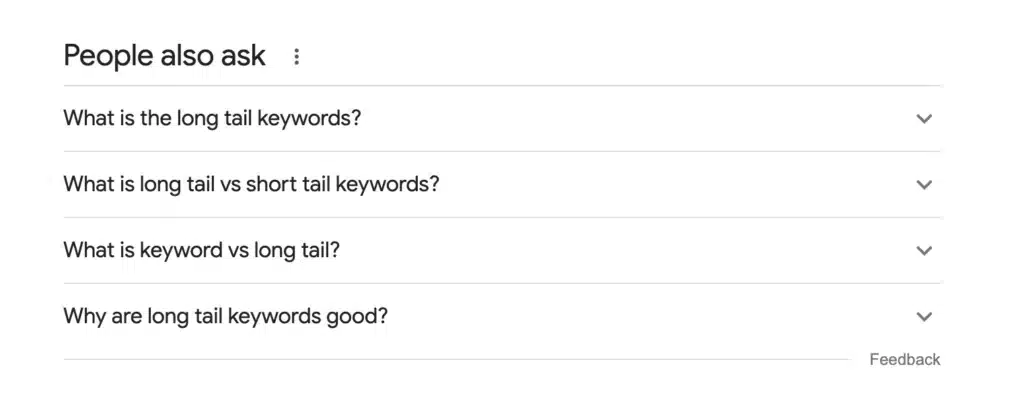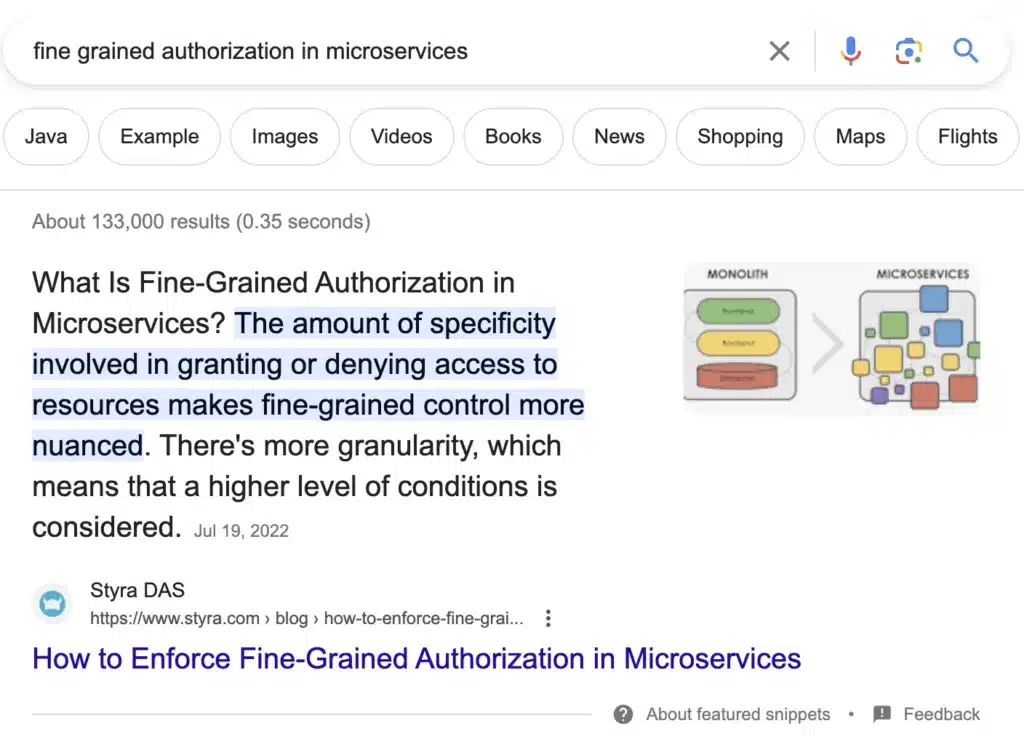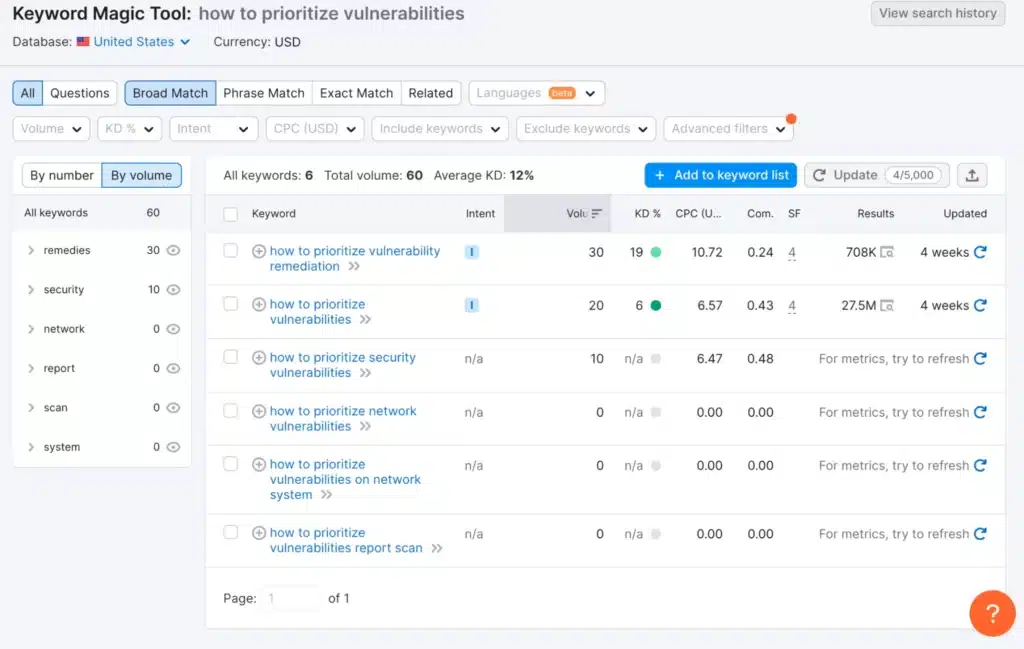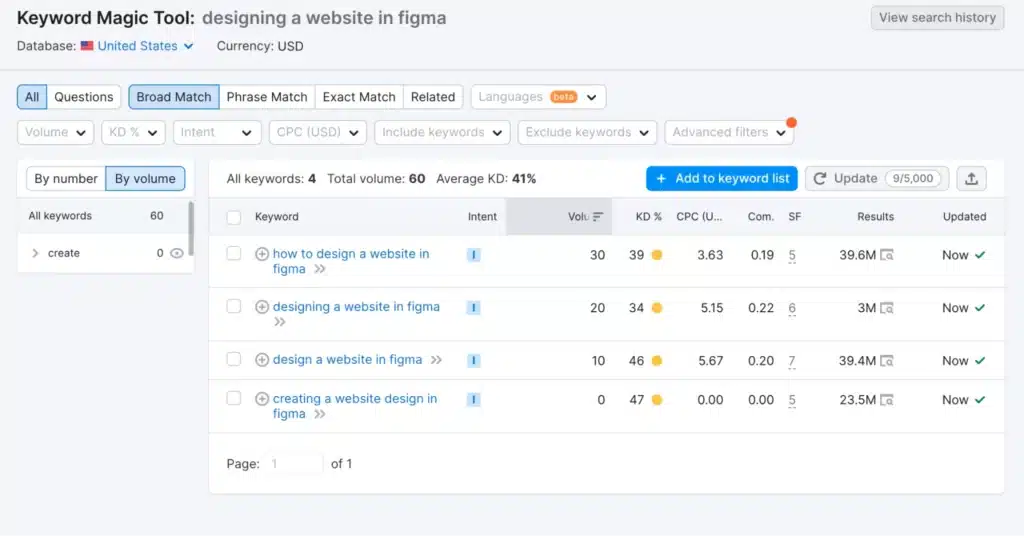In the context of search engine optimization (SEO), long tail keywords are highly specific and longer phrases that target specific search intents. They usually consist of three or more words and are designed to capture a niche search intent rather than a broad keyword.
Top benefits of long tail keywords
Think of long tail keywords as a targeted SEO tactic for your business. You can reel in valuable and relevant traffic, improving your lead generation results. Because these key phrases focus on specific customer needs, they bring highly qualified leads to your website, boosting conversion rates and maximizing marketing return on investment.
Here are the key benefits to your SEO strategy:
Increased keyword base and low competition for rankings
Compared to popular keywords, long tail keywords often have less competition. It’s easier to rank higher in search engine results and get more relevant traffic to your website. By adding these keywords to your copy, you can increase your keyword base and visibility.
🔓 Wondering how to calculate keyword difficulty for your SEO? Read our guide and find out.
Enhanced relevance for search intent, leading to higher conversion rates
SEO long tail keywords are vital in aligning your content with user search intent. According to Think With Google, relevant search experiences influence 39% of purchasers. By crafting content around targeted key phrases, you can better attract a qualified audience, increasing your chances for conversions.
How to identify long tail keywords
Ahref’s analysis of their U.S. keyword database reveals that a mere 31,000 out of 4 billion entries have a monthly search volume greater than 100k, accounting for just 0.0008% of the entire database. The remaining are long tail keywords.
Here are five useful tips to find long tail keywords:
1. Understand the needs of your buyer personas
Start by understanding your buyer personas and their needs. Think about the issues they want to solve and the words they might use when searching for your products or services. These words can be useful long tail keywords that you can include in your content.
2. Identify your competitor’s keywords
Examine your competitor’s content and identify all key phrases and variations they are targeting. This data can help you discover untapped opportunities and refine your SEO strategy.
💪🏽 Ready to gain a competitive edge? Unlock valuable market and competitor insights with our tailored solutions.
3. Use keyword research tools
Keyword research tools provide an overview of search volumes and cost per click (CPC), allowing you to gauge the popularity and demand for specific terms so you can target the ones that your personas are actively searching for. You can also analyze competition data, including domain authority, keyword base and backlink profiles. This tactic allows you to strategically select long tail keywords with lower keyword difficulty, giving you a better chance to rank higher in search engine results.
Consider these tools:
- Google Keyword Planner: This free tool gives an overview of search volumes, competition and keyword variations. You can understand how frequently users search for certain words or phrases and their variations. This data helps you assess the level of competition you may face when targeting relevant keywords.
- Semrush: With a wide range of SEO tools, Semrush helps identify keywords, analyze competitors, build links, perform on page optimization and track rankings. It can help you monitor your SEO progress and improve your content strategy.
- Ahrefs: This tool provides in-depth insights into keyword metrics and trends and has an extensive database of keywords. The tool provides detailed info on search volume, search intent and organic traffic data.
- Moz Keyword Explorer: This tool offers comprehensive keyword research, including search volume, difficulty scores and related keyword suggestions. Moz enables you to gauge the competitiveness of specific long tail keywords and determine their viability for your SEO strategy.
- Forums like Quora and discussion boards: In online communities related to your industry or product, you can observe users’ language and phrases in their discussions. This insight tells you what pain points your users are discussing and allows you to identify and incorporate specific keywords.
- Google Trends: You can compare two keywords and see if interest in a specific keyword is increasing or decreasing. This tool also analyzes search trends and compares keyword popularity to provide insights into emerging and trending topics. Keywords with an upward trend on the graph give a best-case scenario for SEO.
🔧 Want to improve your keyword selection? Read our comprehensive guide on keyword harvesting.
4. Leverage auto-suggest features
When you begin typing a query in a search engine, it suggests related phrases or popular search queries. These suggestions often include key phrase variations that can inform your content strategy.
For example, Google’s auto suggest for the search term “long tail keyword” provided the following variations:
But be warned that the auto suggest feature sometimes shows only popular search queries with high search volumes rather than competent key phrases.
5. Take advantage of the “People also ask” section
Google’s “People also ask” feature presents questions related to your search term. These questions help identify valuable long tail keywords so you can incorporate them into your content accordingly. For example, here are the questions for the search term “long tail keyword.”’
Examples of long tail keywords
Let’s look at the example of the keyword “fine grained authorization in microservices,” which has a low volume and low difficulty, thus making it easier to rank for.
Thanks to a successful SEO strategy, this page ranks at the top of the Google search results, competing with more than 130,000 other links.
Now, let’s look at why “how to prioritize vulnerabilities” is a great example of a long tail keyword in the cybersecurity industry. It has a low search volume and low difficulty score, making it easy to rank for. Also, the CPC is high, meaning advertisers are willing to pay $10 per click.
For our final example, let’s consider “designing a website” — a generic term with a 1.3K monthly search volume in the U.S. A long tail version of this keyword is “designing a website in Figma.” However, fewer people search for it and it is moderately difficult to rank for.
Our blog on the same topic ranks on the first page of the search results.
How to use long tail keywords for SEO
Here are five practical steps to get started with a long tail keyword strategy:
1. Conduct thorough keyword research
Identify relevant keywords and phrases that align with your business, industry and target persona. Analyze top ranking pages for your keyword. Check if your search query is a distinct topic or part of a broader concept.
Make use of the best keyword research tools such as Google Keyword Planner, Moz Keyword Explorer and Semrush to find keywords, search volumes and the difficulty of ranking for each keyword.
2. Understand user intent
Put yourself in the shoes of your buyer persona. Consider the problems they are trying to solve and the phrases they might use in search queries. Understanding this will help you identify keywords and create content that matches their search intent.
3. Optimize on-page elements
Integrate long tail keywords strategically within your website’s on-page elements. Include them in page titles, headings, meta descriptions, alt text and content body. Maintain a natural flow and avoid thin content and keyword stuffing, as it can harm your SEO efforts.
🧑💻 Do you know why and how to cluster keywords? Read our keyword clustering guide to find out.
4. Create valuable content
Create content to answer questions, provide solutions and offer valuable insights to your target persona. Doing so helps establish your website as a credible resource and increase the chances of attracting organic traffic.
Google’s entity-based algorithm understands concepts and semantic relationships, allowing you to rank for similar and long tailed keywords of the parent keyword. However, avoid creating multiple website pages targeting the same intent keyphrases as this leads to keyword cannibalization and significantly harms your SEO efforts.
📝 Want to understand how to improve your website copy? Check out our guide on SEO writing for beginners.
5. Monitor and analyze performance
Regularly track the performance of your content. Monitor rankings, organic traffic and conversion rates to assess the effectiveness of your SEO strategy. Use tools such as Google Analytics and Google Search Console to gauge performance and make data-driven optimizations.
Ranking for long tail keywords is not rocket science
The obstacles many startups face in implementing a targeted long tail keyword strategy are usually rooted in a lack of best practices and effective implementation. By adopting a hyper-focused approach and leveraging SEO techniques, you can improve rankings and compete effectively against established industry players.
If you need help to supercharge your SEO efforts, reach out to our team.













